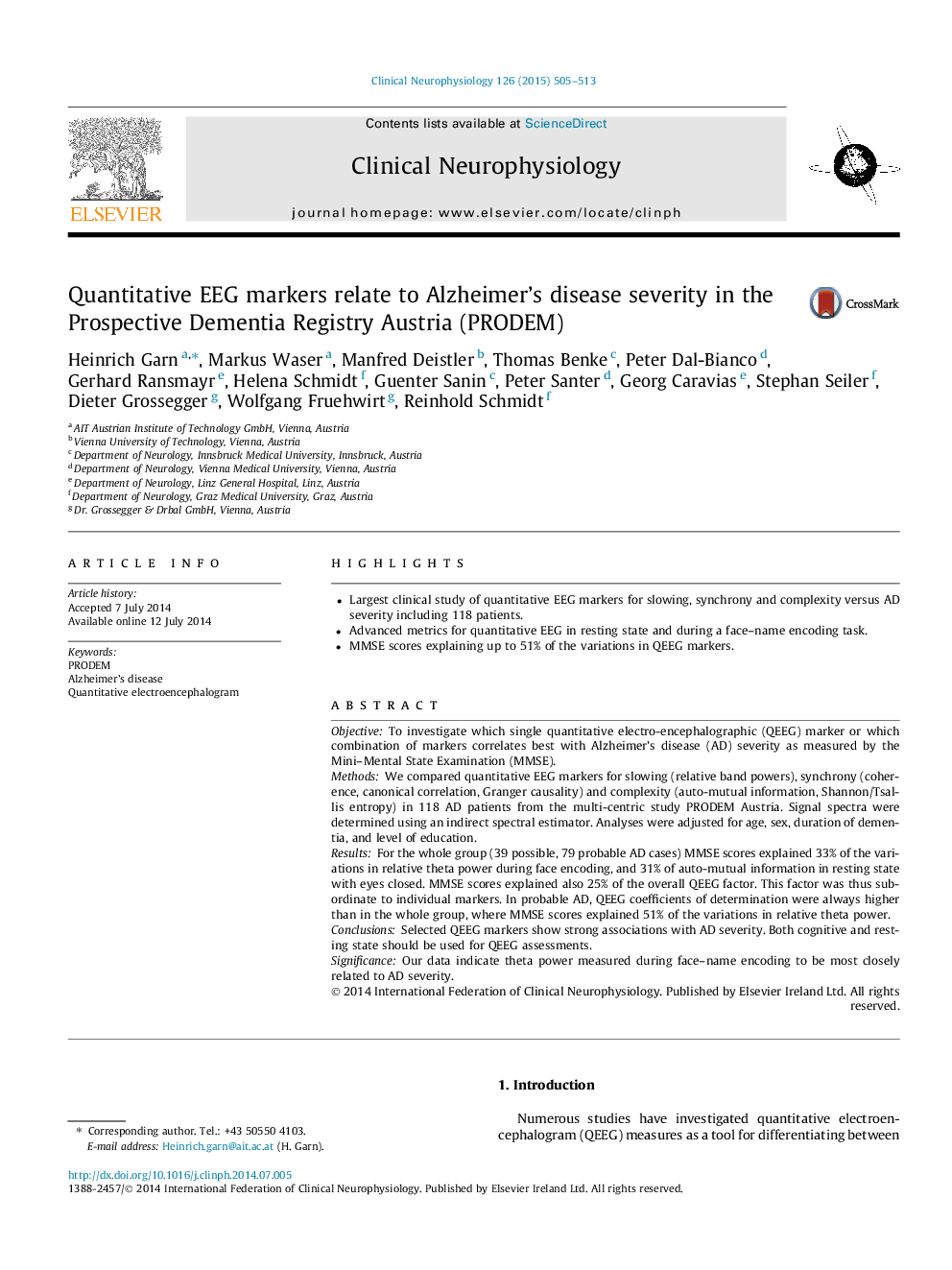| Article ID | Journal | Published Year | Pages | File Type |
|---|---|---|---|---|
| 3043710 | Clinical Neurophysiology | 2015 | 9 Pages |
•Largest clinical study of quantitative EEG markers for slowing, synchrony and complexity versus AD severity including 118 patients.•Advanced metrics for quantitative EEG in resting state and during a face–name encoding task.•MMSE scores explaining up to 51% of the variations in QEEG markers.
ObjectiveTo investigate which single quantitative electro-encephalographic (QEEG) marker or which combination of markers correlates best with Alzheimer’s disease (AD) severity as measured by the Mini–Mental State Examination (MMSE).MethodsWe compared quantitative EEG markers for slowing (relative band powers), synchrony (coherence, canonical correlation, Granger causality) and complexity (auto-mutual information, Shannon/Tsallis entropy) in 118 AD patients from the multi-centric study PRODEM Austria. Signal spectra were determined using an indirect spectral estimator. Analyses were adjusted for age, sex, duration of dementia, and level of education.ResultsFor the whole group (39 possible, 79 probable AD cases) MMSE scores explained 33% of the variations in relative theta power during face encoding, and 31% of auto-mutual information in resting state with eyes closed. MMSE scores explained also 25% of the overall QEEG factor. This factor was thus subordinate to individual markers. In probable AD, QEEG coefficients of determination were always higher than in the whole group, where MMSE scores explained 51% of the variations in relative theta power.ConclusionsSelected QEEG markers show strong associations with AD severity. Both cognitive and resting state should be used for QEEG assessments.SignificanceOur data indicate theta power measured during face–name encoding to be most closely related to AD severity.
